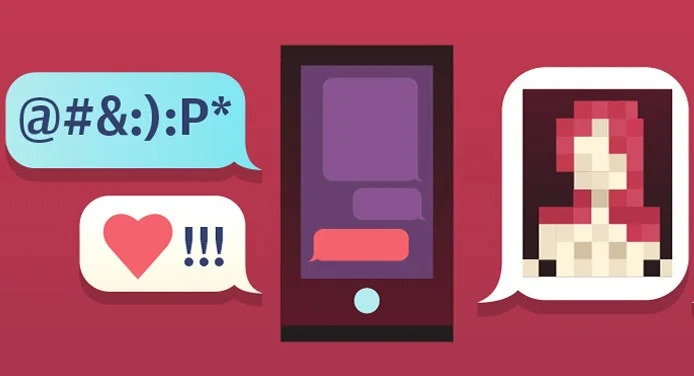Sexting is emerging as a modern way to flirt. According to a recent survey, nearly 80% of US adults have sent or received a sext. Many teens believe it is fine to sext, too. How should adults approach teen sexting? Are the consequences of sexting more severe in kids than adults? Also, is it enough for adults to simply tell preteens and teens to just not do it? As with safe sex and teens, I suggest taking a step-wise approach to sexting. Here’s why.
Sexting is the sharing of sexually explicit images through the internet or electronic devices. Many of the teens that I work say they have sent or received a sext. According to a 2018 study of over 110,000 teens globally, one in four reported receiving sexts and one in seven reported sending them. There is good evidence that teen sexting, particularly among older teens ages 15+ is increasing. For some adolescents, it may be a way to explore their attraction to someone. Kids may sext to flirt, be romantically involved or to show intimacy. From my work with teens, both boys and girls are equally involved although girls may more be more vulnerable to pressure from a partner or peer.
There are different levels of sexting according to author and parent Allison Ochs. In her recent book, “Would I Have Sexted in the 80’s?” she distinguishes different forms of sexting, ranging from 1. written messages or emojis, 2. sexy pictures while fully clothed, 3. partially nude pics 4. completely nude pics and finally 5. sexually explicit videos. Obviously, any level can be problematic although sending nude videos may have more severe repercussions compared to messages or emojis.
Why is teen sexting an issue? The teen brain is a work in progress and only becomes fully mature in the mid 20’s ì. Till then, trying things out and testing new experiences is a very important part of teen development. As such, it is normal for teens to want to explore, especially with sexual behaviors and technology. However, because of brain maturation, some teens may lack the ability to put the “brake” on impulses or consider consequences. As such, engaging in sexting may lead to risky situations for adolescents.
What are those risky situations and other consequences of sexting? I tell teens that social media was created to make sharing easy. Therefore, sending a nude post on social media can be shared easily from a couple to a much larger audience. Once a teenager hits send, the picture is out of their control and creates digital footprint. (This also applies to images on apps like Snapchat which are meant to disappear quickly; Kids can take screenshot of images and spread them regardless). Sending images or videos may lead to embarrassment, humiliation, and loss of self-esteem. Sexting may set teens up for being bullied, objectified or worse being depressed and suicidal. In addition, there can be school and legal-related consequences as nude images of minors are considered pornography in many countries.
After counseling teens in various settings to ‘just say no’ to sexting, I have come to realize that preaching abstinence is not enough. Many older teens feel that if sexting is consensual, it is their decision and right. As with safe sex, I now discuss with teens the responsibilities and consequences of sexting, the importance of not being pressured, and that it is ok to say no. I also use role play to get kids to think real time about handling tough situations when sexting.
It is very important for adults to take a proactive approach in communicating with teenagers about this issue, especially if the child or teen has their own computer or phone. Again, as with safe sex, conversations about sexting should not be a one-time event, but an ongoing discussion. I suggest starting by asking preteens and teens what they know about sending sexy or naked emojis, pictures, or videos. Also, ask whether they know a friend or peer that has sent or received one. Here are a few additional tips compiled from Common Sense Media’s sexting handbook and JAMA Pediatrics Patient Page.
1. Ask teens to hit pause and consider the following before sending or receiving a sext: Would you or a friend get in trouble with this image? Would you be ok with the whole school or a family member possibly seeing this? Would you feel the same about this decision in six months or a year?
2. Discuss the pressures that kids often experience from a partner or peer to send photos or videos. Tell teens it is not ok to be pressured to sext nor is it a way to prove their love or attraction. Have them weigh the pressure to sext with the consequences which can include embarrassment, bullying and legal issues. Remind them they are worthy of respect.
3. Encourage teens to tell a trusted adult and delete rather than forward any inappropriate photos or messages.
4. Finally, if a teen tells you that he or she (or a friend) has been sexting, be calm. Ask what led to sending or receiving the photo or message. You may discover he or she is being bullied or doesn't realize the consequences. Discuss what should be done next, what the responsibilities may be, how to resist pressure, and to make safe choices going forward.
It’s never too late to start that conversation with your teen or preteen about sexting!
